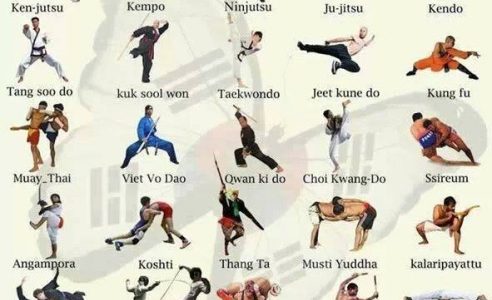Introducing The Variety Of Martial Arts Disciplines: A Guide From Karate To Taekwondo
Introducing The Variety Of Martial Arts Disciplines: A Guide From Karate To Taekwondo
Blog Article
Short Article Author-Haugaard Haastrup
Are you tired of feeling overwhelmed by the large world of fighting styles? With many styles to select from, it can be simple to get shed in a sea of strikes, kicks, and strange names. martial arts doncaster worry not!
This discussion will debunk the various martial arts styles, taking you on a trip from the effective strikes of Karate to the dynamic kicks of Taekwondo. Prepare yourself to uncover the origins, techniques, and philosophies behind these ancient art kinds.
So, tighten your belt and prepare to start an informing exploration into the fascinating globe of martial arts.
Beginnings of Martial Arts Styles
The origins of fighting styles designs can be mapped back to old people and their need for protection and combat methods. Throughout history, different societies developed their very own one-of-a-kind approaches of combating, each with its very own collection of strategies and philosophies.
In China, as an example, fighting styles styles such as Kung Fu and Tai Chi were established as a way of protection and enhancing physical and mental well-being.
In Japan, the samurai warriors produced styles like Karate and Judo, concentrating on self-control, accuracy, and proficiency of the body.
In a similar way, in Korea, Taekwondo became a fighting style emphasizing high kicks, fast activities, and psychological stamina.
These very early human beings laid the structure for the diverse variety of fighting styles styles that exist today, each with its very own rich background and social value.
Strategies and Training Methods
To grasp fighting styles styles, experts should learn numerous strategies and training approaches.
Strategies are the particular activities and actions utilized in battle, such as strikes, kicks, tosses, and blocks. Various martial arts styles have their own one-of-a-kind set of techniques that practitioners need to understand with extensive training.
Training approaches differ depending upon the design, however they generally include a mix of physical conditioning, drills, sparring, and kinds.
Physical fitness is crucial to construct toughness, adaptability, and endurance. Drills assist specialists refine their methods and improve their speed and accuracy.
Sparring allows experts to practice their techniques in a controlled, sensible atmosphere. Types, additionally known as kata, are ironclad sequences of activities that help practitioners create muscle memory and emphasis.
Ideologies and Principles
Exploring the approaches and principles of martial arts styles can supply you with a much deeper understanding of your picked technique. Each fighting style has its very own special ideology and set of guiding principles that form the way it's exercised.
As an example, Karate emphasizes self-control, respect, and self-discipline. It shows specialists to focus their body and minds, allowing them to defend themselves while preserving a sense of inner tranquility.
On the other hand, Taekwondo positions a strong focus on rate, agility, and flexibility. Its concepts are rooted in the tenets of politeness, honesty, perseverance, self-discipline, and indomitable spirit.
https://www.desimartini.com/movies/celebrities/jackie-chans-unorthodox-parenting-how-the-martial-arts-legend-refused-400-million-to-son-jaycee-chan/66a8eea814872/
Since you have actually discovered the origins, methods, and ideologies of different martial arts styles, you have a much deeper understanding of these ancient disciplines.
Envision a young karate trainee, practicing with steadfast determination and focus, breaking through boards with a powerful punch.
Their journey showcases the commitment and strength needed to understand a martial art, advising us that with technique and willpower, anything is possible.
